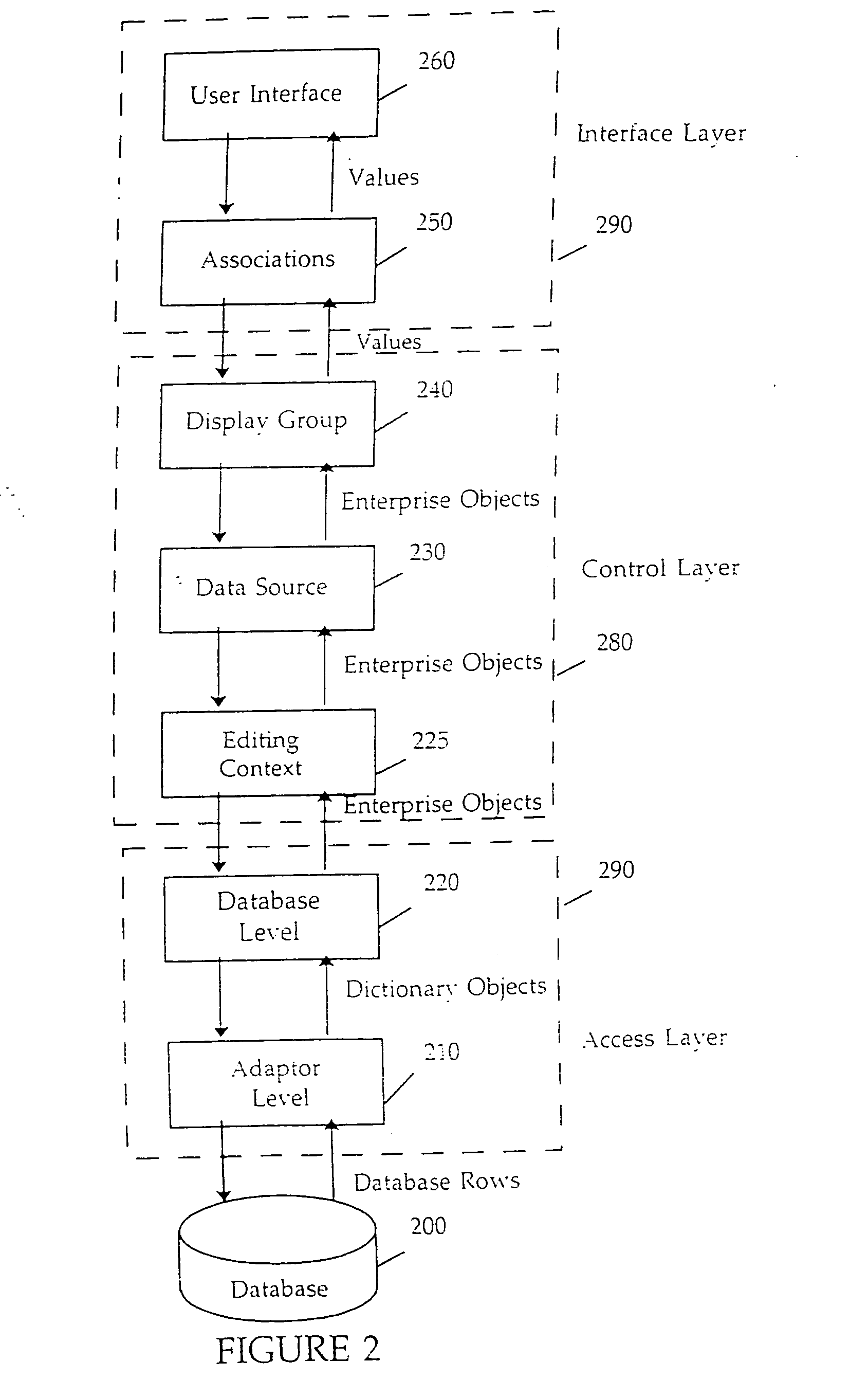Object graph editing context and methods of use
a graph and context technology, applied in the field of object-oriented application programming environments, can solve the problems of not creating a functional program, single database application program cannot generally be used with different databases, and application programs for even this simple function are complicated
- Summary
- Abstract
- Description
- Claims
- Application Information
AI Technical Summary
Benefits of technology
Problems solved by technology
Method used
Image
Examples
Embodiment Construction
[0040] In the following description, numerous specific details are set forth in order to provide a thorough understanding of the present invention. It will be apparent to one skilled in the art, however, that the present invention may be practiced without these specific details. In other instances, well-known features have not been described in detail in order not to unnecessarily obscure the present invention.
[0041] The general structure of one embodiment of a database application program-utilizing the present invention is shown in FIG. 2. This embodiment is used in the Enterprise Objects Framework 2.0 database application programming package from NeXT Software, Inc., assignee of the present invention. Enterprise Objects Framework 2.0 is described in the Enterprise Objects Framework Developer Guide, preliminary release, attached hereto as Appendix A.
[0042] In the application shown in FIG. 2, like in the prior art application shown in FIG. 1, data flows from a relational database ...
PUM
 Login to View More
Login to View More Abstract
Description
Claims
Application Information
 Login to View More
Login to View More - R&D
- Intellectual Property
- Life Sciences
- Materials
- Tech Scout
- Unparalleled Data Quality
- Higher Quality Content
- 60% Fewer Hallucinations
Browse by: Latest US Patents, China's latest patents, Technical Efficacy Thesaurus, Application Domain, Technology Topic, Popular Technical Reports.
© 2025 PatSnap. All rights reserved.Legal|Privacy policy|Modern Slavery Act Transparency Statement|Sitemap|About US| Contact US: help@patsnap.com



